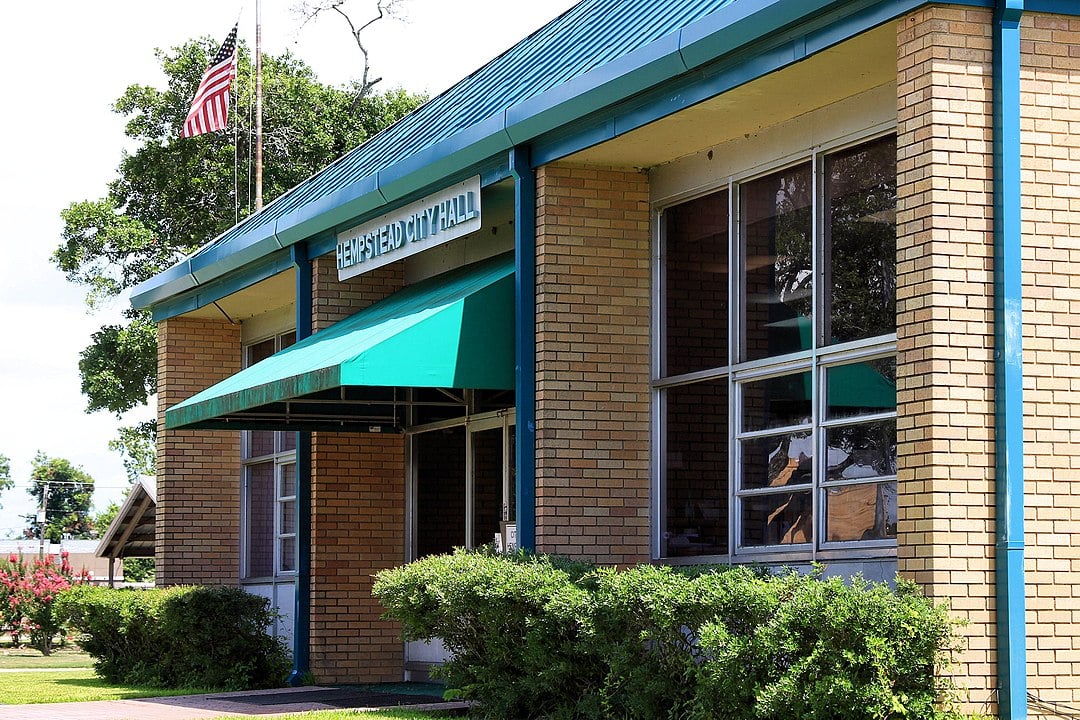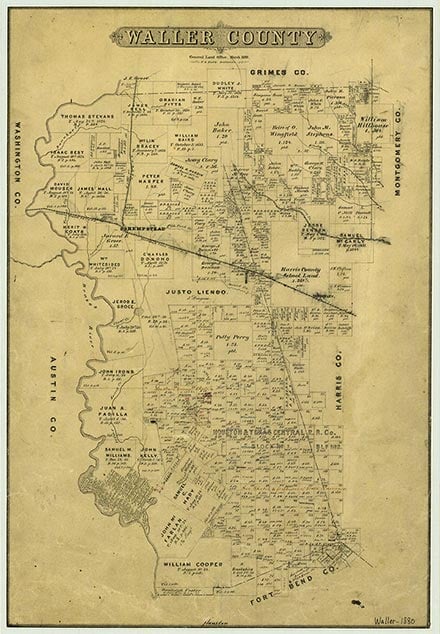Hempstead

Hempstead, Texas

Hempstead, the county seat of Waller County, is on U.S. Highway 290 at its junction with State highways 6 and 159, fifty miles northwest of Houston. Dr. Richard Rodgers Peebles and James W. McDade, founders of Hempstead, organized the Hempstead Town Company on December 29, 1856, to sell lots in the new town at the terminus of the projected Houston and Texas Central Railway. The doctor named the town for his brother-in-law, Dr. G. S. B. Hempstead of Portsmouth, Ohio. Peebles and his wife, Mary Ann Groce Peebles, contributed 2,000 acres from the Jared E. Groce, Jr., estate for the townsite, which Mary Ann Peebles helped lay out. The Houston and Texas Central was extended to Hempstead on June 29, 1858, and the town became a distribution center between the Texas interior and the Gulf Coast. Hempstead incorporated on November 10, 1858, and its importance as a transportation center increased with construction of the Washington County Railroad from Hempstead to Brenham. A post office was established in 1857. During the Civil War the town served as a Confederate supply and manufacturing center. Hempstead was the site of a Confederate military hospital; three Confederate camps were located in its vicinity. Despite occupation of the town by federal troops during Reconstruction and recurring yellow fever epidemics, Hempstead prospered after the Civil War. Availability of transportation facilities and the surrounding area's large cotton production facilitated growth of textile manufacturing and cotton processing industries. Merchandising and processing grew rapidly between 1867 and the 1880s. The town prospered as a transportation center and became Waller county seat in May 1873. Hempstead's commercial, manufacturing, and processing sectors suffered large financial losses from fires between 1872 and 1876. Production of the town's cottonseed oil mill rose to a $90,000 gross value, second highest in the state, by 1880. Lack of banking facilities slowed the retail sector in the 1890s. In 1904 the population was 1,849. In 1906 the Citizen's State Bank was chartered.
In the twentieth century, produce shipping and truck hauling gradually replaced cotton. The Raccoon Bend oilfield developed near the town. Hempstead's location on the Southern Pacific Railroad and the convergence of state and federal highways helped sustain the town's economy when its population decreased from 2,500 in 1914 to 1,395 in 1959. Hempstead was the largest shipper of watermelons in the United States until the 1940s. The town had a school by the 1850s; classes were held in various buildings including the old jail. A freedmen's school operated from 1866 until 1870. The first public school opened in 1881. Hempstead became headquarters by 1955 of a school district including most of Waller County. The Central Texas Teachers Association began summer normals at Hempstead in 1890.
Carole E. Christian | © TSHA

Adapted from the official Handbook of Texas, a state encyclopedia developed by Texas State Historical Association (TSHA). It is an authoritative source of trusted historical records.

- ✅ Adoption Status:
- This place is available for adoption! Available for adoption!
- Adopted by:
- Your name goes here
- Dedication Message:
- Your message goes here
Belongs to
Hempstead is part of or belongs to the following places:
Currently Exists
Yes
Place type
Hempstead is classified as a Town
Location
Latitude: 30.09718940Longitude: -96.08013000
Has Post Office
Yes
Is Incorporated
Yes
Population Count, 2021 View more »
6,028

